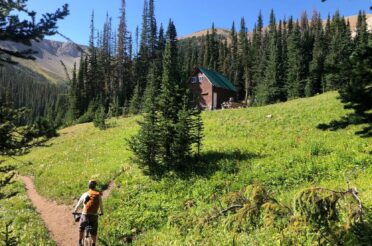Protection vulnerable species

This blog story is about management and conservation of vulnerable species in BC. We would like to introduce you to the five years plan for species at risk in British Columbia from 2013 to 2017 that sets up measures still in effect today.
Introduction
British Columbia is a province rich in biodiversity. BC is home to 50.000 animal and plant species, which makes it a place with the highest diversity of native wildlife and plants in Canada. The natural ecosystems need to be conserved and protected entirely, as it’s linked to BC’s economy and social life through the different services that nature gives, such as using the water, the soil to grow plants and some renewable resources and carbon sequestration. One species disappearance in this province can have a big impact on the local communities and unbalance the rest of the ecosystem. Also, knowing which species are at risk is fundamental to make every management decision for land and water. Raising awareness in the public and private sectors with clear and available information should be a priority as well to elevate the understanding of the conservation work and processes.
Acting for a Healthy ecosystem
Every species must be considered to keep the ecosystem as healthy as possible. Not just the one at risk, but also the one not endangered, depending on their needs. BC insists on collective effort and public awareness on different levels. In this way, the cooperation and communication between all stakeholders (government, First Nations, neighboring jurisdiction, land managers, landowners, resource users and communities) can be developed. Management plans can therefore be created and implemented based on accurate and available data, prioritizing species at risk towards BC’s community interests.
Management Conservation
In order to manage as best as possible, it is crucial to identify what impacts and potential threats there are for each species’ populations, taking into account the geographical area. The second key component is communicating and sharing scientific and traditional knowledge. For instance, knowing the different movements and behaviors of the species by monitoring will help managers make informed decisions.
The two major threats that put pressure on species are loss of habitat and fragmentation of the living landscape. Multi species approaches can be developed for their maintenance, their recovery, establishing priorities in a landscape-level program, also using the designation of the existing provincial park areas.
To create a good management plan, good quality of the information is vital. Environmental and scientific research must be available easily in order to decide if a species is a conservation priority or not.
By using the BC Species and Ecosystems Explorer, a central database, the Conservation Data Center and wildlife scientists create management plans and identify conservation priorities.
An update of the data collection must be done regularly to implement effective conservation actions by decision makers, resource users and the public. With the support of industries and third parties, conservation actions are more effective and help to reduce the threats that might exist to species.
BC’s Stewardship of at-risk species
For a responsible conservation of the land and the species, a common approach could be established between the different groups involved in the maintenance and conservation effort. Coordination and cooperation are essential as well as the participation of BC’s citizens. This can be established through a volunteering program, or by the commitment of private landowners and the protection effort of all sectors. For that, updating the list of species at risk is important to deal with the current situation. On a legislation level, laws should be made as clear and as precise as possible to become really effective.
Measure and Report on Government’s investment
Moreover, all reports and data provide an archive of progress and efficacy while the government and other third parties invest in conservation. They also provide support for recommendations and prioritizing actions to implement. The effectiveness is measured by developing an initial indicator for the State of Environment Reporting on the change of the native vertebrate species status in BC, and developing a centralized internet platform to public reporting of species at risk in BC.
Conclusion
To conclude, it’s possible to manage and conserve biodiversity in many different ways, but it is essential to keep the ecosystem healthy. The consequences of an unbalanced ecosystem and the disappearance of species would be costly for British of Columbia.
If you want to know more about our research and conservation projects or learn how you can get involved and make a difference, check out the Chilcotin Ark Institute website.
Source : Minister of Environment, Minister of Forests, Lands and Natural Resource Operations. 2014. Protecting Vulnerable Species: A Five-Year Plan for Species at Risk in British Columbia. Available at : https://www2.gov.bc.ca/assets/gov/environment/plants-animals-and-ecosystems/species-ecosystems-at-risk/species-at-risk-documents/five-year-plan-for-species-at-risk-in-bc_low-res.pdf [Accessed 03/2021].



